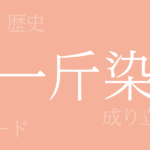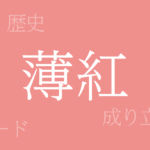Japan’s traditional colors have enriched its culture and arts for centuries, and among them, “Koubai-iro (こうばいいろ)” captivates with its vividness that evokes the essence of spring. This article delves into the profound allure of Koubai-iro, exploring everything from its historical background to its color code and its Western name.
About Koubai-iro (こうばいいろ)
Koubai-iro (こうばいいろ), a bright yet deep pink, is inspired by Japan’s plum blossoms. This color symbolizes elegance and vitality, and is frequently used in traditional Japanese arts such as kimonos and paintings. Koubai-iro is popular for its expression of femininity and charm, and it has been embraced in modern fashion and design.
History of Koubai-iro
Koubai-iro was first used in the Heian period within the aristocracy, where colors held significant meanings. It symbolized new beginnings and purity with the arrival of spring. Over time, particularly in the Edo period, this color became beloved among the common folk as well, becoming more prevalent as dye techniques evolved.
Color Codes for Koubai-iro
To accurately reproduce Koubai-iro in digital designs and web productions, knowledge of its color codes is essential.
- HEX: #F2A0A1
- RGB: R:242 G:160 B:161
- CMYK: C:5 M:49 Y:27 K:0
Western Name for Koubai-iro
Koubai-iro is often referred to in the West as “Peachy Pink” or “Cherry Blossom Pink.” These names reflect the unique beauty recognized within Western color naming systems, evoking the soft, warm hues of Koubai-iro.
Summary of Koubai-iro
Koubai-iro, with its historical and cultural significance, is one of Japan’s traditional colors. It’s perfect for incorporating a touch of Japanese aesthetic into modern designs or adding a soft, spring-like element. Using its color codes in digital designs allows for the full expression of Koubai-iro’s charm, bringing a fresh breath to your projects.

























